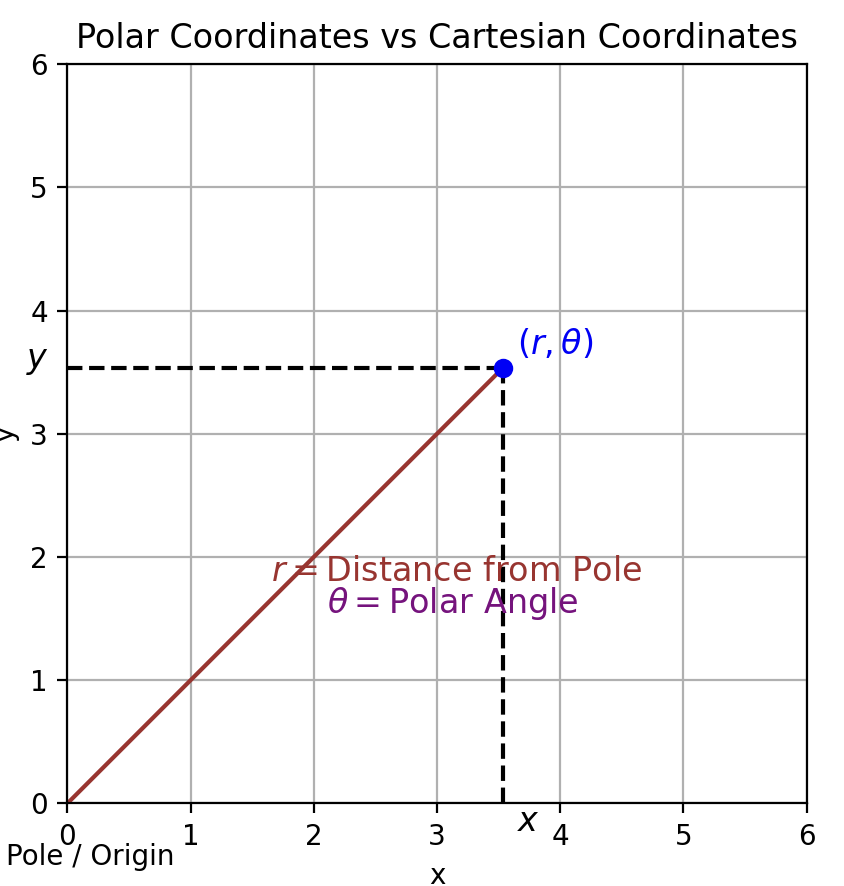Abstract
This script demonstrates polar and Cartesian coordinates, annotating both the radial distance r, angle θ, and the Cartesian projection on the x-y plane.
Image

Code
Python
Output
This script demonstrates polar and Cartesian coordinates, annotating both the radial distance r, angle θ, and the Cartesian projection on the x-y plane.
